Generally speaking, each linetype has a specific meaning for each branch of industry.
Linetype
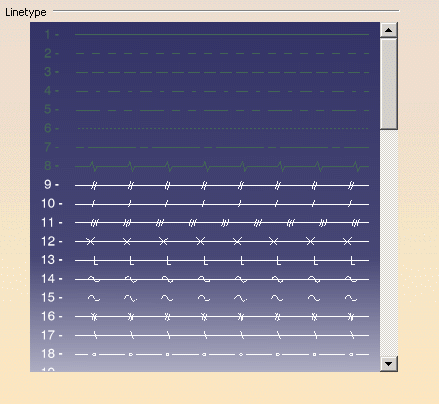
- the first eight types are 1D linetypes. They are grayed out as they
correspond to the default linetypes (displayed in the Graphic
Properties toolbar) and cannot be modified.
1D linetype is a combination of line segments of different lengths but these segments can be defined only along one dimension, i.e. along the length of the line or of the curve.
1D linetype can be applied to straight lines, curves and splines - the other linetypes are 2D linetypes. 2D linetype is a set of line segments that are oriented in th 2D space of the line or of the curve.
Note that:
|
-
Double-click the linetype to be modified. The Linetype editor opens:
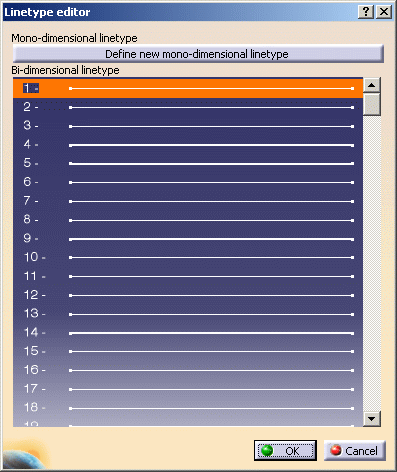
You can either define a mono-dimensional linetype or a bi-dimensional linetype.
-
To define a mono-dimensional linetype, click Define a new mono-dimensional linetype. The Mono-dimensional linetype editor dialog box opens:
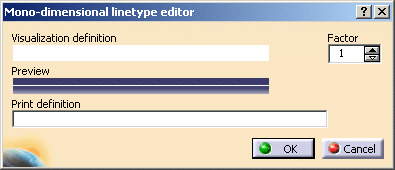
This dialog box lets you define the linetype to be used for visualization and print purpose. -
In the Visualization definition box, click the desired squares to define the linetype pattern: a white square corresponds to a drawing, a black square corresponds to a blank. You can select up to 16 squares.
The Preview is updated accordingly as shown below:
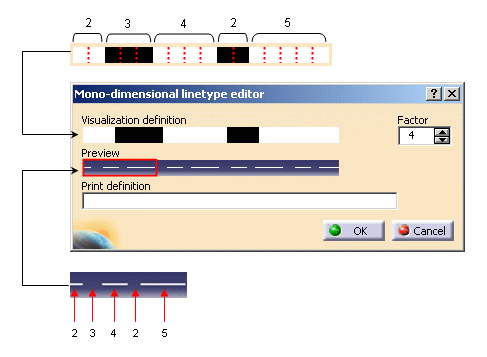
-
Use the Factor arrows to stretch the pattern by increasing the value:


-
In the Print definition box, enter the length in millimeters for each pattern segment (do not forget to leave a blank space after each character you type).
A positive value indicates a drawing and a negative value indicates a move without drawing.
The capture below illustrates the print definition of the pattern defined in step 5:
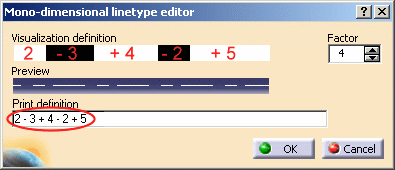
-
Click OK to validate and close the dialog box.
The new linetype replaces the selected line in the Linetype editor list. If you do not wish to go on defining linetypes, click OK once again to close the Options dialog box. -
To define a bi-dimensional linetype, double-click a line from the Bi-dimensional linetype list in the Linetype editor window. The Bi-dimensional linetype editor window opens:
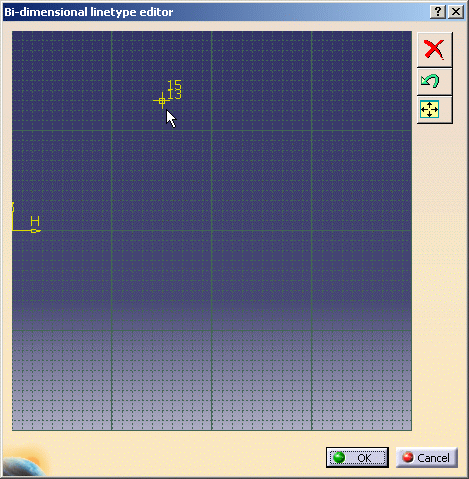
This dialog box lets you define a 2D linetype as a combination of any number of polylines, each polyline can be made of any nuber of straight lines. -
Move the cursor then click to create a segment and repeat these steps as necessary to define the desired pattern.
You can create segment breaks by double-clicking a point then moving the cursor to draw a new segment:
-
Use the following icons to:
-
 delete the whole pattern
delete the whole pattern -
 delete the last segment
delete the last segment -
 reframe the bi-dimensional line editor.
reframe the bi-dimensional line editor.
-
-
Click OK to validate and close the dialog box.
The linetype is displayed instead of the selected line at the end of the Linetype editor. -
Click OK once again to close the Linetype editor and display the new linetype instead of the selected line at the end of the Linetype list.